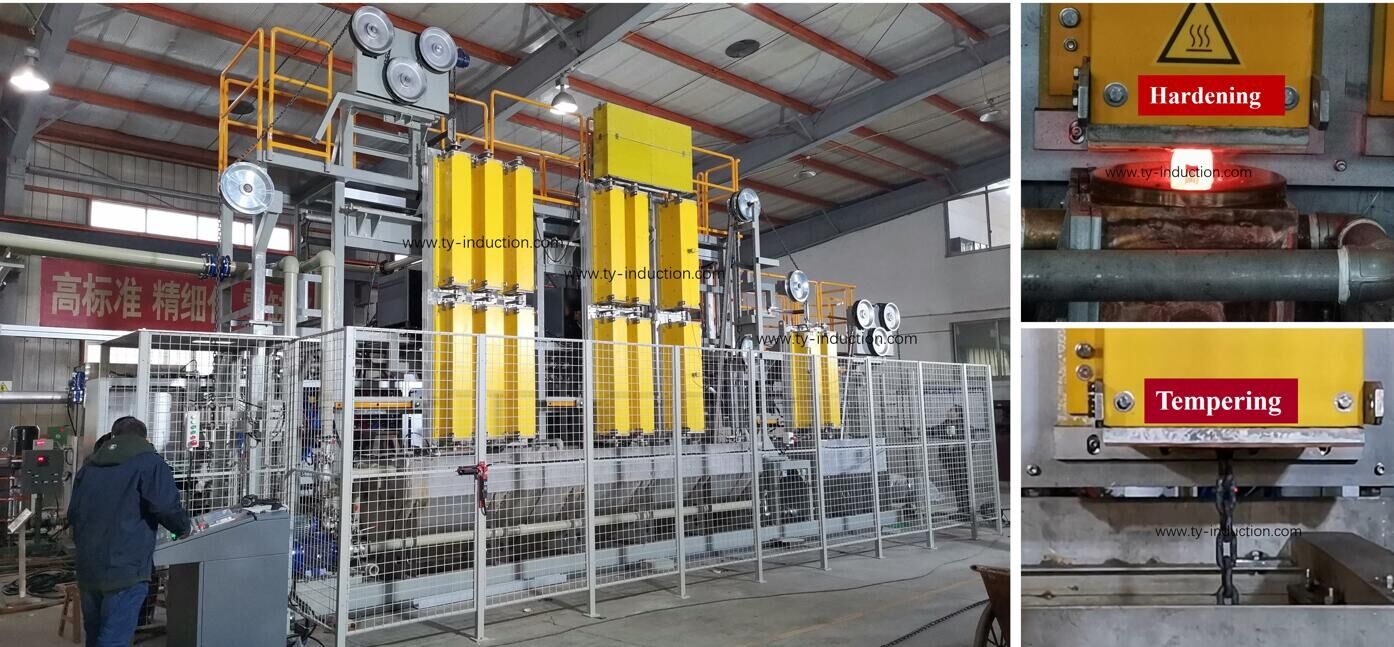Exploring the Distinctions: Induction Hardening vs. Tempering
November 10, 2023
In the intricate world of metallurgy and heat treatment processes, the distinction between induction hardening and tempering is a critical factor in determining the properties and performance of metals. To unravel this complexity, we delve deep into the characteristics, processes, and applications that set these two techniques apart.
Induction hardening is a state-of-the-art process that harnesses the power of precision heating to enhance the hardness and durability of metal components. This method employs a high-frequency induction heater to rapidly heat specific areas of a metal object. Following the heating phase, a swift quenching process is initiated, rapidly cooling the metal and achieving the desired level of hardness.
At its core, the science behind induction hardening revolves around the controlled application of heat. By concentrating the heat on specific regions, we can selectively tailor the hardness of the material, ensuring a robust surface while preserving the overall structural integrity. This meticulous approach results in a surface that boasts exceptional hardness, wear resistance, and improved mechanical properties.
Induction hardening finds widespread applications across diverse industries, including automotive, aerospace, and manufacturing. Components such as gears, shafts, and bearings benefit significantly from this process, as it equips them to withstand heavy loads and abrasive conditions, ultimately prolonging their operational lifespan.

Induction Heat Treatment Line for Hardening and Tempering of Chains
In contrast, tempering is a complementary process that follows the initial hardening phase. It involves reheating the previously hardened metal to a specific temperature and then subjecting it to a controlled cooling process. This secondary treatment imparts toughness, relieving internal stresses and striking a delicate balance between hardness and resilience.
Tempering can be likened to an art form, as it involves a delicate equilibrium between heating and cooling. This process not only refines the hardness achieved through prior treatments but also enhances the metal's ductility and impact resistance. The result is a material that exhibits optimal strength and toughness, making it ideal for applications where a combination of these properties is essential.
The applications of tempered metals are diverse, ranging from the production of tools and springs to structural components. The ability of tempered metals to simultaneously exhibit hardness and toughness makes them invaluable in scenarios where dynamic loads and sudden impacts are commonplace, offering a versatile solution to various engineering challenges.
While both induction hardening and tempering contribute to the enhancement of metal properties, they differ significantly in their approaches and outcomes. Induction hardening primarily targets surface hardness, making it suitable for components exposed to abrasive conditions. In contrast, tempering focuses on achieving a harmonious balance between hardness and toughness, catering to applications where resilience is as critical as hardness.
The decision between induction hardening and tempering hinges on the specific requirements of the intended application. If surface hardness and wear resistance are paramount, induction hardening emerges as the optimal choice. Conversely, when a delicate equilibrium between hardness and toughness is imperative, tempering becomes the key to unlocking optimal performance.
In the dynamic landscape of metallurgy, the differences between induction hardening and tempering play a pivotal role in shaping the characteristics of metal components. Each method brings its own set of advantages, and the choice between them should be driven by a thorough understanding of the unique demands posed by the application.
As industries continue to push the boundaries of material science, the synergy between induction hardening and tempering emerges as a powerful combination, allowing for the creation of metal components that excel not only in hardness but also in resilience, ushering in a new era of metallurgical excellence.
Hot Products
Contact Us
Enquiry hotline:
+86 135 4128 7190
Email:
Address:
No.18,14th Floor, Building 2, No. 169 Zhongli Road, Banzhuyuan Subdistrict, Xindu District, Chengdu, Sichuan, China, Code:610000
